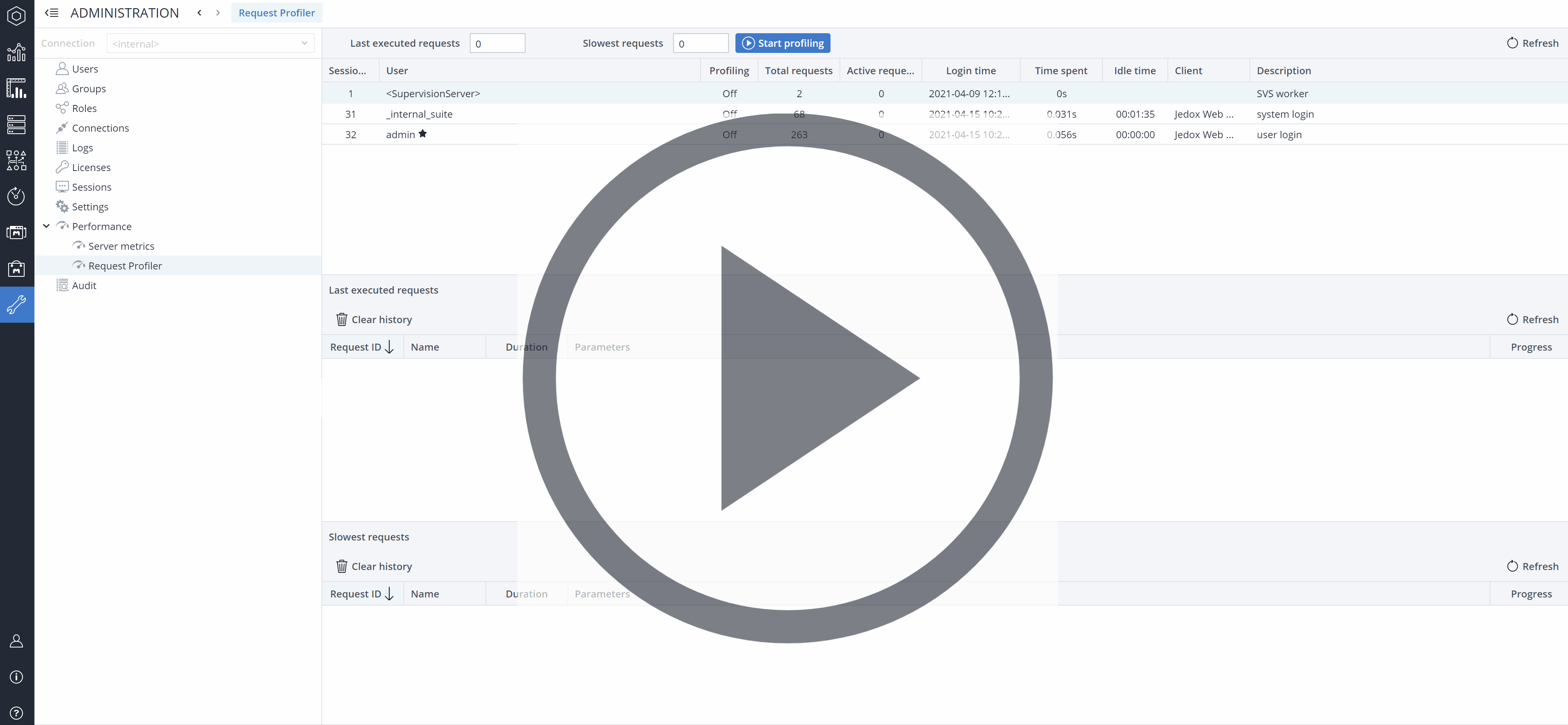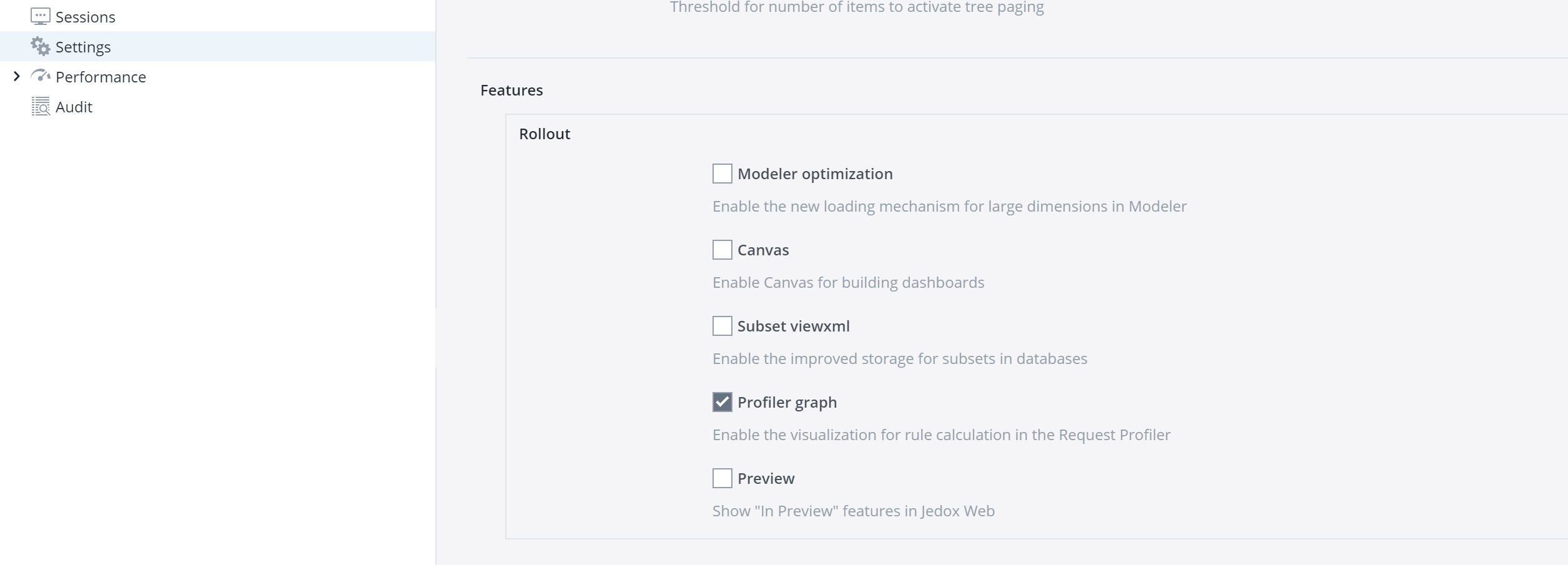The Request Profiler shows the details of specific value-calculation requests in the Jedox In-Memory DB. By enabling the Request Profiler, a history of requests per specific user session is built. The Request Profile, i.e., meta-data about the request calculation, can be seen in the Request Profiler panel in the Performance area of Jedox Administration. Additionally, for requests which involve value calculation of a specific complexity, a visualization for long-running calculations in the request list can be generated, showing information such as rules that were calculated and for how long.
To run a profiling process, choose a user, and then click on Start profiling.
You can see the Last executed requests and the Slowest requests in the request profiler. When you click on the Start profiling button, the last 100 executed requests and the 10 slowest requests are shown by default. You can change the default values.
You can also refresh or clear the history of the last executed requests and the slowest requests.
The detailed information for a specific request can be shown (if it is available for the request) by double-clicking on the request in the list. The request details can be shown in two modes, Chart and Tree. The Tree mode is generally available, but the Chart mode is still in preview. To enable the Chart mode, activate it in the Settings.
The tree shows a hierarchy of the rules which were calculated as part of the request calculation. If a rule calculation in turns invokes another rule, this would be represented as a "child" node in the tree. The tree also shows how often individual rules were processed during the calculation, and how long the processing took for individual calls, and overall. This can provide information on which rule calculations were the most expensive in terms of time during a request calculation and may be the best to focus on for troubleshooting or improvements. Apart from rule information, the runtimes for aggregations of base values, cached values, or string values are shown.
Updated July 21, 2025





